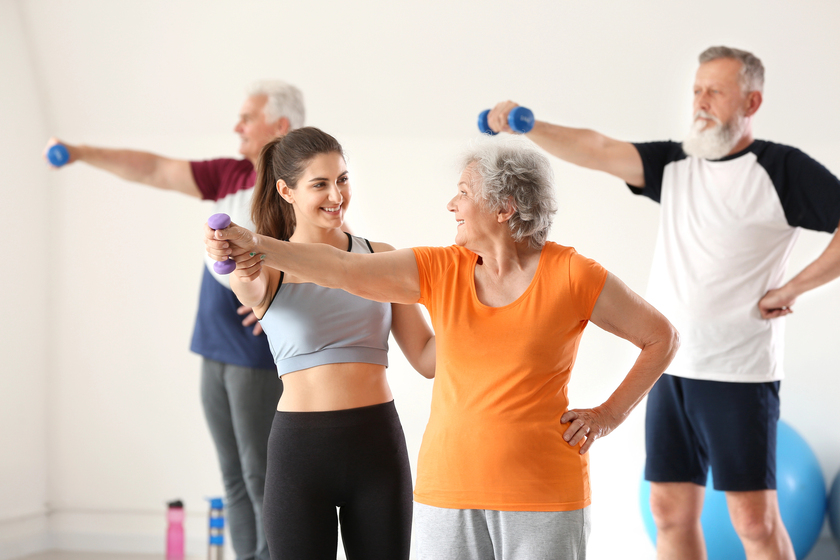Maintaining physical activity is essential for overall health, especially for those with limited mobility. Fortunately, assisted living residents can benefit greatly from communities that prioritize and facilitate physical activity. These communities offer various resources and personalized support to ensure everyone can engage in physical exercise, regardless of their mobility limitations.
The Importance of Physical Activity for Assisted Living Residents
Physical activity is crucial for maintaining health, reducing the risk of chronic diseases, and enhancing mental well-being. For those with limited mobility, staying active can be more challenging but no less important. Assisted living communities understand these challenges and provide tailored solutions to help residents remain active and engaged.
Tailored Exercise Programs
One of the significant advantages of assisted living communities is their ability to offer customized exercise programs. These programs are designed by professionals who understand the specific needs and limitations of each resident. Whether through seated exercises, water aerobics, or gentle yoga, residents can find activities that suit their abilities and preferences. Personalized attention ensures that each exercise plan maximizes benefits while minimizing risks.
Access to Specialized Equipment and Amenities
Assisted living communities often feature specialized equipment and amenities that cater to individuals with limited mobility. From adaptive fitness equipment to accessible pools, these resources make it easier for residents to engage in physical activity safely. The availability of such equipment, along with the guidance of trained professionals, helps residents build strength, flexibility, and endurance.
Physical Therapy and Rehabilitation Services
For residents recovering from injuries or surgeries, physical therapy and rehabilitation services are vital. Assisted living communities provide on-site physical therapists who work closely with residents to develop and implement recovery plans. These services are designed to improve mobility, reduce pain, and enhance overall function, enabling residents to regain as much independence as possible.
Group Activities and Social Interaction
Staying active is not just about physical health; it also involves social interaction and mental well-being. Assisted living communities offer group activities that promote social engagement while encouraging physical movement. Whether it’s a group walk around the grounds, a yoga class, or a gardening club, these activities provide residents with opportunities to connect with others, reducing feelings of isolation and loneliness.
Supportive and Encouraging Environment
The supportive environment of an assisted living community plays a crucial role in encouraging residents to stay active. Staff members are trained to motivate and assist residents in participating in physical activities. This support can make a significant difference in a resident’s willingness to engage in exercise, especially for those who may feel discouraged by their mobility limitations.
Nutritious Meals and Hydration
Proper nutrition and hydration are essential components of an active lifestyle. Assisted living communities ensure that residents receive balanced meals that provide the energy and nutrients needed to support physical activity. Staying well-hydrated is equally important, particularly for those engaging in exercise. Residents benefit from comprehensive care that addresses all aspects of health and wellness.
Mental Health Benefits
Physical activity has well-documented mental health benefits, including reducing symptoms of depression and anxiety. Assisted living communities integrate physical activity into residents’ daily routines to help improve mood and cognitive function. Activities like tai chi, music-supported workouts, and gentle stretching can also promote relaxation and stress relief.
Continuous Monitoring and Adjustment
As residents’ needs and abilities change, so too do their physical activity plans. Assisted living communities continuously monitor residents’ health and adjust exercise programs as necessary. This ongoing evaluation ensures that each resident receives the appropriate level of activity, preventing injuries and promoting long-term health.
For you and your loved ones exploring assisted living options, it’s important to consider how communities support physical activity for residents with limited mobility. Our community is dedicated to providing personalized care and innovative solutions to help residents stay active and healthy. With tailored exercise programs, specialized equipment, and a variety of engaging group activities, we ensure residents with limited mobility gain access to the resources they need to thrive. Our comprehensive wellness approach includes nutritious meals, hydration, and mental health benefits, all within a supportive environment. Contact us today to learn more about how we can enhance the quality of life for you or your loved one!







